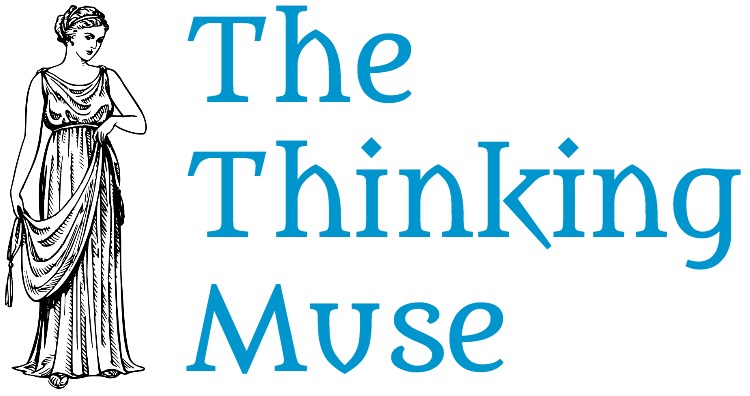Predicting the future series: Future forecasts and you

It’s coming, are you ready? What are the future forecasts for the world? What can you do about it? Read on and find out.
Welcome back to my Predicting the future series. This is the second article of the series and talks more specifically about future forecasts or insights.
For background on the topic, please read the first article: Predicting the future series: Who are futurists and is it a hoax? It covers futures studies as a field, the issues and different approaches for modeling, and information on organizations practicing future studies today.
Now, on to the good stuff. What we really want to know is…what can we expect in the future, right? We want information. Then we can make the smartest decisions today for the best possible tomorrow.
Let’s begin with how some of the predictions or future forecasts come about. This can inform us on how seriously you want to take the predictions.
What tools or processes are used for future forecasts?
There are different tools and processes used in the study of the future. Depending on the philosophies driving the approach, certain factors may weigh more heavily or not at all.
However, a major element in most approaches is the human reaction to the changing future. One that is particularly hard to anticipate.
A significant force in people’s actions are their values. Any tool that allows you to see trends on changing values would be of great value to futurists. For that reason, I found the results of the “World Values Survey” to be particularly interesting. Look at the video below as is displays the trend of various countries over the last 34 years.
Elsewhere, a group process has proved to be quite successful in the Good Judgement Project. The Good Judgement Project has boasted impressive future forecasts in a forecasting tournament.
How did they do that? First, they assessed how open-minded participants were. Apparently, the more open-minded you are the better forecaster you will make. It has also been found that groups perform better than individuals. Practiced forecasters also perform more accurately. Not surprisingly, intelligence and issue expertise also improved accuracy. The process had group participants focus on:
- alternating between the inside and outside view of a topic
- turning instincts into probabilities (those trained in probabilities performed better)
- looking at the more broadly than deeply (from many different perspectives versus greatly detailed information)
- weighing the previously successful forecasters opinions heavier
- not rushing the process
- being able to change probabilities throughout the process
You can learn more about The Good Judgement Project at their website.
By and large, futurists organizations use a lot of data analysis. Techniques such as linear regression, multiple regression, factor analysis and econometrics are used. They perform analysis of the issues and trends. Then they interpret the system as a whole and the interrelationships between the issues. Lastly, they prospect different scenarios or visions. How each of these steps are completed accounts for different opinions for the outlook.
H.G.Wells is considered the founder of the future studies field. He wrote and spoke about future forecasts in the early 1900s. He stressed the importance of using scientific method over mere speculation for future forecasts. He did provide successful predictions in his work. Unfortunately if you are a futurist you aren’t often around to see the fruits of your labor.
One thing that he stressed that resonates even stronger today is the impact of science and technology. Science is likely the number one influence on all issues. It will drive therapies in health issues. It will drive processes in environmental issues. It will drive tools in military and industrial issues. All those together will drive economic issues.
That is why our society is stresses STEM (science technology engineering and math) education for kids. STEM is our future. And future forecasts depend on understanding that trajectory. So take heed of the technology visionaries of today. They know what they speak of.
What are some future forecasts?
I have included predictions from several sources for you to ponder.
From the Millennium Project:
The Millennium Project is an independent, non-profit global participatory futures research think tank. That is a mouthful!
It publishes a State of the Future report every year. In it, they include a ‘Where are we winning’ and ‘Where are we losing’ grid. It lists human conditions issues that are showing improvement or little-to-no improvement. The State of the Future executive summary for 2015-2016 included the lists as follows:
Winners. Issues with a positive trend (looking back to 20 years ago forecasted to 10 years in the future).
• GNI per capita
• Poverty
• Foreign direct investment, net inflows
• Freedom
• Women in national parliaments
• Share of high skilled employment
• School enrollment, secondary
• Literacy rate, adult total
• Electricity from renewables, excl. hydro
• Energy-Efficiency
• Improved water sources
• Physicians per 1,000 people
• Health expenditure per capita
• Prevalence of undernourishment
• Mortality rate, infant
• Life expectancy at birth
• population growth
• Internet users
Losers. Issues with a flat or negative trend (looking back to 20 years ago forecasted to 10 years in the future).
• Unemployment
• Fossil fuel and cement production emissions
• Renewable internal freshwater resources
• Forest area
• Biocapacity per capita
• F&D Expenditures
• Terrorism incidents
• Income inequality
• Number of wars and serious arm conflicts
• Corruption in the public sector
From the World Futurist Society:
A December 2014 outlook accumulated future forecasts from numerous sources. Here are selected highlights below:
• Computers will perfectly understand our words—and may use them against us. (World Trends & Forecasts, Nov-Dec 2013, p. 8)
• Computer chips will shrink to the size of dust—and become just as ubiquitous. (Richard Yonck, “Connecting with Our Connected World,” Nov-Dec 2013, p. 17)
• Hybrid materials will blend the properties of living and nonliving things. (Tomorrow in Brief, July-Aug 2014, p. 2)
• Drones will become vital tools for environmental management and protection. (Tomorrow in Brief, Mar-Apr 2014, p. 2; Princess Aliyah Pandolfi, “Robotic Technology to Preserve Wildlife: A Scenario,” Mar-Apr 2014, p. 35)
• Plants that “talk” to us could become our allies in ecosystem monitoring. (Tomorrow in Brief, May-June 2014, p. 2)
• Smarter sex toys: The technologies of intimacy will become more interactive—and more intimate. (Karen Moloney, “Euphoric, Harmless, and Affordable: A Trend Analysis of Sex,” May-June 2014, p. 22)
• If extraterrestrial life is out there, we will develop the tools to find it. (World Trends & Forecasts, Jan-Feb 2014, p. 10) (See Related: Do you wonder if there is life beyond Earth? Consider the Drake equation)
• Plants will offset some climate change by ingesting more carbon dioxide. (World Trends & Forecasts, Jan-Feb 2014, p. 11)
• Mega-fires in forests around the world will become more frequent. (David Bengston and Michael J. Dockry, “Forest Futures in the Anthropocene: Can Trees and Humans Survive Together?” July-Aug 2014, p. 36)
• Small-scale energy for households could one day come from rainwater. (Tomorrow in Brief, July-Aug 2014, p. 2)
• The rodents will rise! Rats could play a more-prominent role in Earth’s ecosystems. (Tomorrow in Brief, May-June 2014, p. 2)
• Wise local gardeners will feed the world. (John Michael Greer, author of Green Wizardry, reviewed by Rick Docksai, Jan-Feb 2014, p. 52)
• Swallow that sensor! Better health through big data. (Bertalan Meskó,“Rx Disruption: Technology Trends in Medicine and Health Care,” May-June 2014, p. 31)
• Plasma will offer a new weapon against antibiotic-resistant bugs. (Tomorrow in Brief, Jan-Feb 2014, p. 2)
• Liar, liar, brain waves on fire! Brain scanning could one day replace jurors as finders of facts. (Clay Rawlings and Rob Bencini, “What Does Moore’s Law Mean for the Rest of Society?” July-Aug 2014, p. 41)
• Science collaborations may bring distrustful nations closer together. (World Trends & Forecasts, Mar-Apr 2014, p. 13)
• Religious values may become a key consideration for developing policies on such issues as water management. (Syeda Mariya Absar, “Water Futures: An Islamic Perspective,” Jan-Feb 2014, p. 19)
From Ray Kurzweil:
An article from Singularity Hub summarized a few of Ray’s past and future forecasts. Ray Kurzweil is co-founder of Singularity Hub and an all-around genius guy with notable credentials. His past predictions have been impressively accurate. Here are 5 of his future predictions.
• By the late 2010s, glasses will beam images directly onto the retina.
• By the 2020s, most diseases will go away as nanobots become smarter than current medical technology. Normal human eating can be replaced by nanosystems.
• By the 2030s, virtual reality will begin to feel 100% real. We will be able to upload our mind/consciousness by the end of the decade.
• By the 2040s, non-biological intelligence will be a billion times more capable than biological intelligence (a.k.a. us). Nanotech foglets will be able to make food out of thin air and create any object in physical world at a whim.
• By 2045, we will multiply our intelligence a billionfold by linking wirelessly from our neocortex to a synthetic neocortex in the cloud.
What can I do to prepare for the future?
The first thing you can do is raise your awareness. The world is changing faster and faster. Humans tend to think linearly. It is what we often experience and it makes sense to us. However, technology is changing exponentially. This can leave us feeling overwhelmed.
To overcome that, we need to change the way we think. Here is a short video to further explain why we need to do that.
To start yourself on this journey, give yourself an education. Visit the organizations I listed in the Predicting the future series: Who are futurists and is it a hoax? article. They are filled with enough information and publications to last you to the future, ha!
The next step is to engage. Here is a list of fun ways to do that.
- Play a game: The world game.
- Read up and make a long bet at Long Now. An organization that “…hopes to provide a counterpoint to today’s accelerating culture and help make long-term thinking more common.”
- Browse articles from across the internet about the future sorted by year and category on Future Scanner.
- Subscribe to a magazine by a future organization such as the free one from The Club of Amsterdam Journal or a newsletter at Singularity Hub.
- Watch ‘What if?’ videos from BBC. These videos play with the idea of different future forecasts and what that may be like.
- Watch a documentary on the future at topdocumentaryfilms.com. Suggestions include (listed in order of User Rating from highest to lowest):
- Future by Design
- The Sustainable City
- The Cleantech Future
- Beyond Human
- Future Life on Earth
- Earth 2100
- Visions of the Future
- Future Life on Earth
- Learn how by being comforted by your past allows you to move on in the future by reading How nostalgia actually helps you move forward in life.
- Join one of the many futurists societies based on your approach mentality. (See list in Predicting the future series: Who are futurists and is it a hoax?)
- Share your awareness with others. Anyone and everyone. This is a cause that impacts us all.
Do you see foresee your future?
This all makes so much sense. Why are we all so stressed and overwhelmed? We just are woefully unprepared for the speed of how fast change is occurring.
Humans on a large scale have never had to deal with the constant change we have seen in our lifetimes.
I would image the same skills identified as making you a good forecaster would enable you to handle the changes better. Namely, being open-minded by considering different perspectives, be willing to adjust your stance, and thinking realistically about the likelihood of events transpiring.
Challenging? Yes. Can you do it? Absolutely.
Just take a deep breath and relax. We are all in it together.
Did this Predicting the future series give you a little food for thought? I was introduced to a lot of neat resources I never knew existed.
How about you? Let me know in the comments.
If you liked this article, consider subscribing for free weekly issues of The Thinking Muse delivered to your inbox.
Resources
2015-16 State of the Future from the Millennium Project
A generic foresight process framework by Joseph Voros from Foresight
Association of Professional Futurists
Cornish, Edward. Futuring. Bethesda, Md.: World Future Society, 2004. Print.
Forecasting Fox from The New York Times
Futures Studies: Theories and Methods by Sohail Inayatullah from World Futures Studies Federation
Gidley, Jennifer M. “Global Knowledge Futures: Articulating the Emergence of a New Meta-level Field.” A Transdisciplinary and Transcultural Journal for New Thought, January (2013): 145-72. Research Gate. Web. <http://www.researchgate.net/publication/248976218_Global_Knowledge_Futures_Articulating_the_Emergence_of_a_New_Meta-level_Field>.
Great Transition The Promise and Lure of the Times Ahead from Tellus Institute
Introduction to Exponential Thinking with Salim Ismail from YouTube
Kaku, Michio. Physics Of The Future. New York: Doubleday, 2011. Print.
Outline of Future Studies from Wikipedia
Ray Kurzweil’s Mind-Boggling Predictions for the Next 25 Years from Singularity Hub
Sardar, Ziauddin. Future. London: Hodder & Stoughton Ltd, 2013. Print.
What Research Tells Us About Making Accurate Predictions from Harvard Business Review
Who’s Best at Predicting the Future? (and How to Get Better) from Psychology Today
Wikipedia contributors. “Futures studies.” Wikipedia, The Free Encyclopedia. Wikipedia, The Free Encyclopedia, 24 Nov. 2015. Web. 24 Nov. 2015.
World Future Studies Federation




